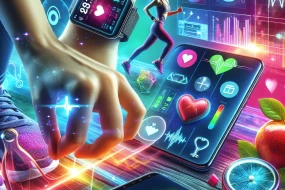
In an era where technology intersects with every facet of our lives, health tech stands at the forefront, promising innovations that not only enhance healthcare delivery but also democratize access to essential services. Yet, amidst this rapid technological evolution, a crucial element often gets overlooked: accessibility. For developers immersed in the world of health tech, prioritizing accessibility isn't just a moral obligation—it's a key driver of innovation and inclusivity. This article delves into why accessibility must be a central focus in health tech development, providing practical insights and examples to guide developers in this mission.
Understanding Accessibility in Health Tech
When we talk about accessibility in health tech, we're referring to the design and implementation of technology that is usable by as many people as possible, including those with disabilities. This includes individuals with visual, auditory, physical, speech, cognitive, and neurological disabilities. Developers need to consider these diverse needs to create solutions that are genuinely inclusive. For instance, imagine a telehealth app that lacks screen reader compatibility. For a visually impaired user, this app becomes a barrier rather than a bridge to healthcare services.
The Ethical Imperative
From an ethical standpoint, accessibility should be non-negotiable. The World Health Organization estimates that over a billion people live with some form of disability, representing about 15% of the world's population. By focusing on accessibility, developers are not just ticking a regulatory box; they are championing a more equitable healthcare system. Consider the analogy of a public building: if there's no ramp, wheelchair users are effectively excluded. Similarly, in digital spaces, inaccessible design excludes those who might benefit the most.
Legal and Financial Incentives
Beyond ethics, there are legal and financial incentives for making health tech accessible. Laws like the Americans with Disabilities Act (ADA) in the United States mandate accessibility, and non-compliance can lead to significant penalties. On the financial front, accessible design can open up new markets. Think about it: by designing for accessibility, you're potentially reaching an additional billion users. A study by Forrester Research found that accessible websites had a 35% increase in market reach.
Common Mistakes to Avoid
1) Neglecting User Testing: Developers often skip testing with actual users with disabilities, leading to oversight of critical accessibility issues.
2) Over-reliance on Automated Tools: While tools like WAVE or Axe are useful, they can't catch every accessibility issue.
3) Ignoring Color Contrast: Poor color contrast can make text unreadable for those with visual impairments.
4) Failing to Provide Text Alternatives: Images and multimedia need alt text and transcripts for screen readers.
5) Complex Navigation: Overly intricate navigation can confuse users with cognitive disabilities.
6) Insufficient Keyboard Navigation: Not everyone uses a mouse; keyboard accessibility is crucial.
7) Overlooking Mobile Accessibility: Many users rely on mobile devices, so apps must be accessible on smaller screens.
8) Forgetting about Captions: Videos without captions exclude those with hearing impairments.
9) Lack of Consistency: Inconsistent design can be disorienting for users with cognitive disabilities.
10) Not Keeping Up with Standards: Accessibility standards evolve, and staying updated is essential.
Practical Steps for Developers
To make health tech more accessible, developers should start by integrating accessibility into the design process from the outset. Conducting thorough user research, including individuals with disabilities, can provide invaluable insights. Additionally, adhering to the Web Content Accessibility Guidelines (WCAG) offers a solid foundation. Regular training and workshops on accessibility can keep development teams informed and proactive. Remember, accessibility is not a one-time task but an ongoing commitment.
Case Studies: Success Stories in Accessible Health Tech
Several companies have set benchmarks in accessible health tech. For instance, Microsoft’s Seeing AI app leverages artificial intelligence to help the visually impaired by narrating the world around them. Another example is Apple’s Health app, which includes features like VoiceOver and Magnifier, making it usable for a broader audience. These case studies underscore the potential of accessible design to transform lives and highlight the competitive edge it provides in the health tech industry.
Looking Ahead: The Future of Accessibility in Health Tech
As technology continues to evolve, so too will the standards and expectations for accessibility. Developers who embrace these challenges will not only enhance user experience but will also drive innovation within the health tech sector. The future promises more advanced tools, such as AI-driven accessibility features that anticipate user needs. By staying ahead of these trends, developers can ensure their solutions remain relevant and impactful.































